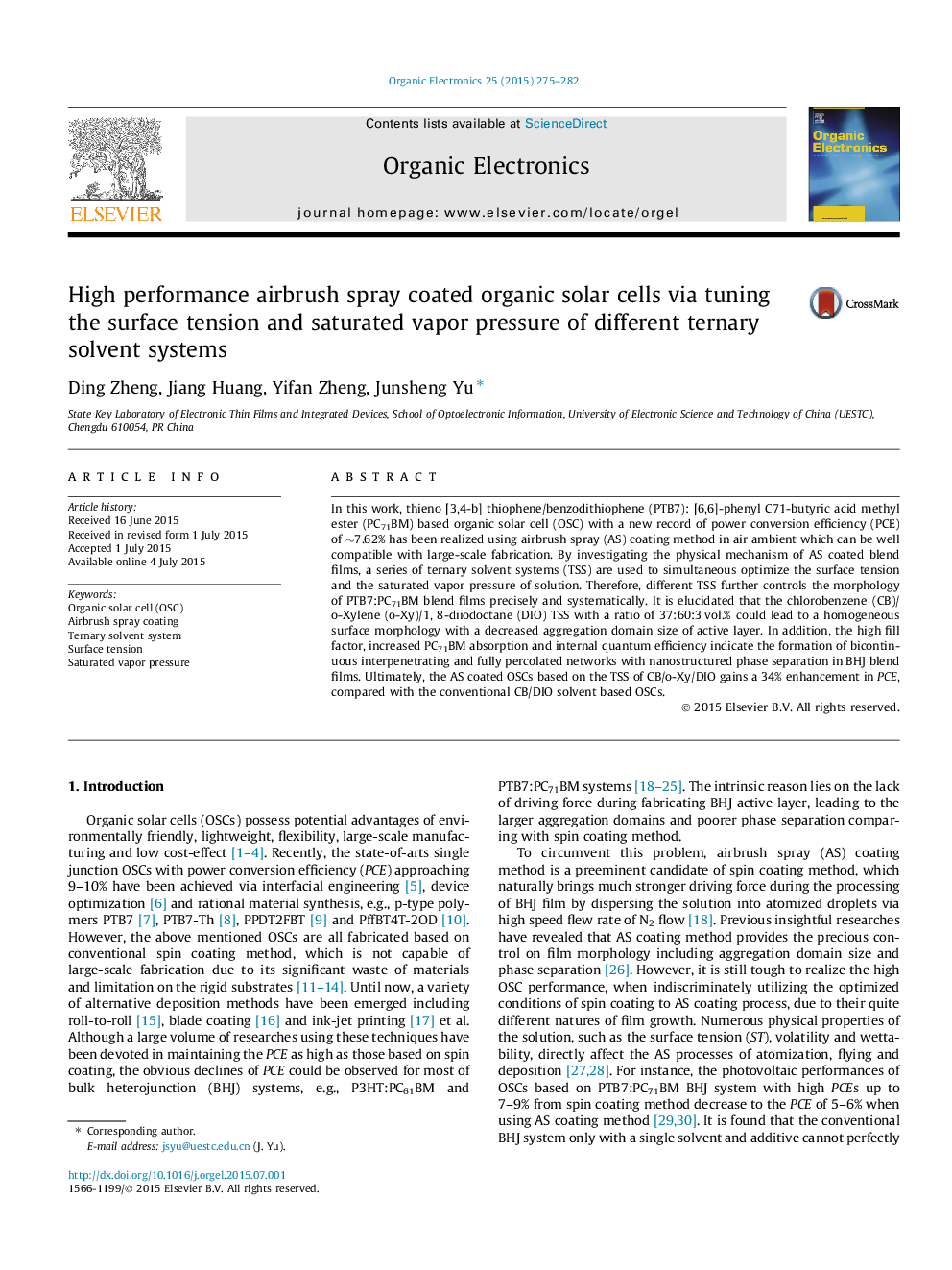| Article ID | Journal | Published Year | Pages | File Type |
|---|---|---|---|---|
| 1263652 | Organic Electronics | 2015 | 8 Pages |
•Physical mechanism of airbrush spray coated blend film was investigated systematically.•Surface tension and saturated vapor pressure played a significant role in film formation of airbrush spray coated blend film.•A series of ternary solvent system was proposed to control the morphology of BHJ blend film.•High performance OSC based on PTB7:PC71BM with ∼7.62% PCE fabricated by airbrush spray coating method.
In this work, thieno [3,4-b] thiophene/benzodithiophene (PTB7): [6,6]-phenyl C71-butyric acid methyl ester (PC71BM) based organic solar cell (OSC) with a new record of power conversion efficiency (PCE) of ∼7.62% has been realized using airbrush spray (AS) coating method in air ambient which can be well compatible with large-scale fabrication. By investigating the physical mechanism of AS coated blend films, a series of ternary solvent systems (TSS) are used to simultaneous optimize the surface tension and the saturated vapor pressure of solution. Therefore, different TSS further controls the morphology of PTB7:PC71BM blend films precisely and systematically. It is elucidated that the chlorobenzene (CB)/o-Xylene (o-Xy)/1, 8-diiodoctane (DIO) TSS with a ratio of 37:60:3 vol.% could lead to a homogeneous surface morphology with a decreased aggregation domain size of active layer. In addition, the high fill factor, increased PC71BM absorption and internal quantum efficiency indicate the formation of bicontinuous interpenetrating and fully percolated networks with nanostructured phase separation in BHJ blend films. Ultimately, the AS coated OSCs based on the TSS of CB/o-Xy/DIO gains a 34% enhancement in PCE, compared with the conventional CB/DIO solvent based OSCs.
Graphical abstractFigure optionsDownload full-size imageDownload as PowerPoint slide
